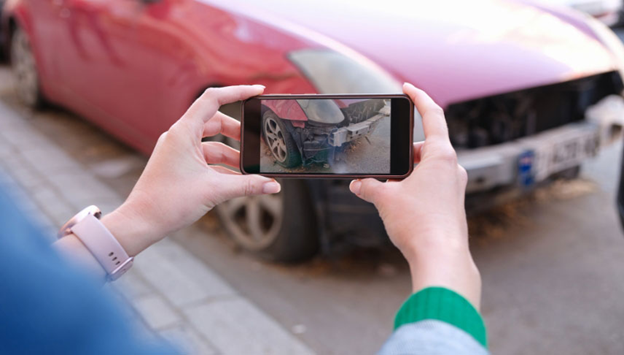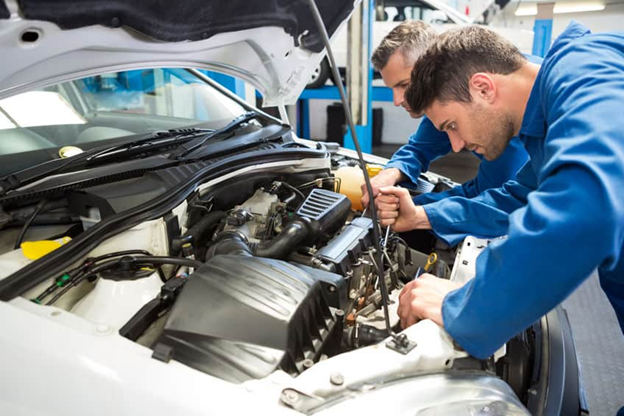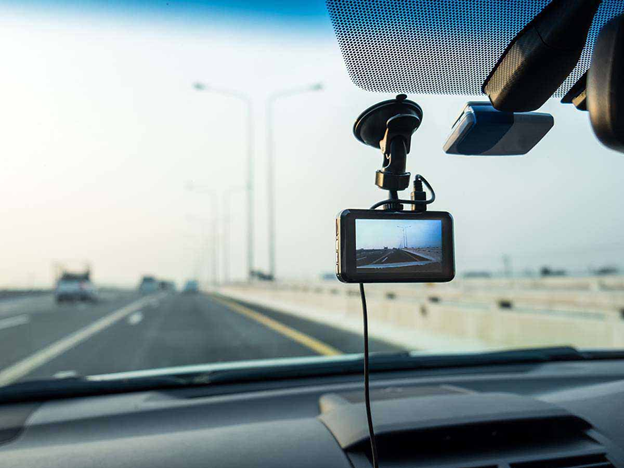Few things are as frustrating as discovering damage to your vehicle and realizing the other driver is long gone. Whether it happened in a parking lot or during your morning commute, a hit-and-run can leave you feeling angry, confused, and unsure what to do next. But knowing the right steps to take can make all the difference in getting your vehicle repaired and your claim approved smoothly.
Under B.C.’s Motor Vehicle Act, a hit-and-run occurs when a driver fails to stop and exchange information after causing damage or injury. This includes collisions with other vehicles, property, pedestrians, or cyclists. According to ICBC, hit-and-run claims are more common than many drivers think, thousands are filed across the province each year.
The good news is that you’re not alone, and there’s a clear process for protecting yourself, your vehicle, and your coverage.
“The key is to stay calm and gather as much information as possible,” says Adam Grossman, ICBC’s Director of Media Relations. “Even small details can help investigators locate the at-fault driver or confirm eligibility for a hit-and-run claim.”
At QA Collision, we’ve helped countless clients through the repair and claim process after a hit-and-run. From filing your police report to coordinating with ICBC-approved repair programs, our team ensures your vehicle is restored safely and efficiently—and that you feel supported every step of the way.
In the following sections, we’ll guide you through what to do immediately after a hit-and-run, how to report your claim, and what coverage and costs to expect under your ICBC Autoplan policy.
Step 1: Ensure Your Safety and Gather Information
After a hit-and-run, safety always comes first. If the collision happened while you were driving, pull over to a safe location, turn on your hazard lights, and check for injuries. If you’re in a parking lot and discover the damage later, avoid moving your vehicle until you’ve taken photos; this helps preserve evidence for police and ICBC.
Once you’re safe, take a few minutes to gather as much information as possible.
This can make a huge difference in identifying the at-fault driver and proving your claim.
Here’s what to record:
- Photos: Take clear pictures of your vehicle’s damage, the surrounding area, skid marks, debris, and any nearby vehicles.
- Details: Note the exact time, location, and any nearby landmarks or businesses.
- Witnesses: If anyone saw the incident, ask for their contact information and a short description of what they saw.
- Video evidence: Check for nearby security cameras or dash cams that may have recorded the event.
Even if it feels like you have limited information, ICBC recommends submitting everything you can, even partial licence plate numbers or colour descriptions can help.
If your vehicle isn’t safe to drive, don’t risk further damage. Contact a towing service or request a tow through your ICBC c.a.r. shop VALET repair facility, such as QA Collision.

Step 2: Report the Incident Immediately
Once you’ve gathered evidence, the next step is reporting the hit-and-run to both police and ICBC. Quick action is essential; waiting too long can affect your eligibility for coverage.
Call the Police
If the other driver is still at the scene or you witness them fleeing, call 911 immediately.
If you discover the damage later, contact your local police department’s non-emergency line and file a report within 24 hours. The RCMP emphasizes that timely reporting gives investigators the best chance of identifying the suspect (RCMP: Report a Crime).
Make sure your report includes:
- The date, time, and location of the incident
- Any vehicle or driver descriptions
- Photos and witness information
- A clear statement that the driver left the scene
If your hit-and-run involved injuries, this police report becomes mandatory for your ICBC claim.
Contact ICBC
After contacting police, report the incident to ICBC as soon as possible. You can do this online or by calling 1-800-910-ICBC (4222)—the line is open 24/7.
Be prepared to provide:
- Your police file number
- A description of the incident
- Photos and any other evidence you collected
You must also submit a written account within six months of the accident to qualify for hit-and-run coverage under your Autoplan policy (ICBC Autoplan CovICBC Autoplan Cov).
Once your claim is filed, ICBC will assign a claims representative who will let you know whether you can bring your vehicle directly to an ICBC-accredited c.a.r. shop VALET facility, like Raydar Collision Kelowna, or if an inspection at a claim centre is needed first.
“It’s important to call ICBC right away—even if you think the damage is minor,” says Caroline Wong, a licensed insurance advisor with the British Columbia Automobile Association (BCAA). “Reporting early ensures your claim is properly documented and prevents complications later in the process.”
At this point, you’ve handled the most critical steps: ensuring your safety, preserving evidence, and initiating your claim. Next, we’ll look at what kind of coverage applies in a hit-and-run and what you can expect to pay out of pocket.
Step 3: Understanding Your Coverage and Deductible
If you’ve been the victim of a hit-and-run in British Columbia, your ICBC Basic Autoplan includes protection for both vehicle damage and personal injury, even if the other driver isn’t identified. ICBC provides up to $200,000 in coverage for hit-and-run incidents involving injury or property damage (ICBC Hit and Run Coverage).
However, there are a few important details to keep in mind:
- The accident must have occurred on a public road or parking lot. Damage that happens on private property, such as an underground parkade or driveway, may not qualify under this coverage.
- You must report the incident to police and ICBC promptly, and file a written statement within six months.
- If you have optional Collision coverage, ICBC will compare your policy deductible to the standard hit-and-run deductible.
How the Deductible Works
The standard deductible for a hit-and-run claim is $750 or your Collision deductible, whichever is lower.
For example:
- If your Collision deductible is $300, you pay $300.
- If it’s $1,000, you pay $750.
Unlike most other claims, a hit-and-run will not impact your insurance premiums, as ICBC recognizes that you weren’t at fault for the incident.
“Drivers shouldn’t avoid reporting out of fear that their premiums will rise,” explains Joanna Linsangan, ICBC’s spokesperson. “If you’re the victim of a hit-and-run, your rates won’t be affected as long as the claim meets ICBC’s requirements.”
Understanding these details helps you move forward confidently with your repair process, knowing what’s covered, what you’ll pay, and what to expect from ICBC.

Step 4: How QA Collision Can Help After a Hit-and-Run
Once you’ve reported the incident and received the go-ahead from ICBC, it’s time to have your vehicle repaired. Choosing a certified ICBC c.a.r. shop VALET facility like QA Collision ensures the process is fast, convenient, and backed by quality assurance.
Here’s how we support drivers after a hit-and-run:
- Direct ICBC Billing: We work directly with your claims representative so you don’t have to handle paperwork or payments upfront.
- Guaranteed Repairs: Every repair comes with a lifetime guarantee for as long as you own your vehicle.
- Replacement Vehicles: Through the ICBC VALET program, we can help arrange a courtesy car while your vehicle is in our care.
- Expert Technicians: Our Red Seal–certified team uses advanced tools and manufacturer-approved procedures to restore your vehicle’s structure, safety systems, and finish.
Beyond repairs, we understand that a hit-and-run can be stressful. Our team provides clear communication, photo updates, and coordination with ICBC from start to finish.
“Our goal is to make the process seamless for drivers who’ve already been through enough,” says a Raydar Collision Group Service Advisor. “From the moment your vehicle arrives, we handle the details so you can get back on the road with confidence.”
If your vehicle is not drivable, we can also arrange towing and prioritize your repair scheduling.
To learn more about how QA Collision assists with ICBC repairs, visit our QA Collision page for directions, hours, and contact information.
Step 5: If You Witness a Hit-and-Run
Even if you weren’t directly involved, witnessing a hit-and-run can make a real difference in helping someone else recover their losses or in bringing an at-fault driver to justice.
If you see a hit-and-run happen:
- Stay safe and avoid confrontation. Never try to chase or block the other driver.
- Record details immediately. Write down or record the vehicle’s make, model, colour, licence plate number (even partial), and the direction it was travelling.
- Note the time and location. Include cross streets, landmarks, or nearby businesses.
- Call 911 right away if the crash caused injuries or serious damage. For minor incidents, call your local RCMP or municipal police non-emergency line (RCMP Report a Crime).
- Offer your contact information to the victim or police so they can include your statement in their report.
“Independent witnesses play a crucial role in solving hit-and-run investigations,” says Cpl. Mike Halskov of the BC Highway Patrol. “Even small details can provide the missing link that helps us identify a suspect or confirm the chain of events.”
If you happen to capture the incident on a dash cam or security camera, preserve the footage and notify the police immediately. ICBC and law enforcement can often use this video evidence to support an insurance claim or criminal case.
Being a responsible witness helps protect everyone on the road.

Step 6: Preventing Future Hit-and-Runs
While not every collision can be avoided, there are practical steps BC drivers can take to lower the risk of becoming a hit-and-run victim.
Park Smart
Whenever possible, park in well-lit, high-traffic areas with security cameras or visibility from nearby storefronts. Avoid secluded or poorly lit sections of large parking lots.
Invest in a Dash Cam
Dash cameras are one of the most effective tools for protecting yourself. They provide timestamped evidence that can confirm events for both police and ICBC. Many models now include parking mode, which records motion or impact when your car is unattended (CAA North & East Ontario: Dash Cams Explained).
Stay Visible
Choose parking spots near lights, entrances, or surveillance cameras. Simple visibility often deters careless or reckless drivers from leaving the scene.
Review Your Coverage Regularly
Speak with your insurance representative to ensure your Collision coverage and Optional coverage match your driving habits and vehicle’s value. Policies and deductibles can change, so regular reviews help ensure you’re properly protected.
Maintain Proper Documentation
Keep a notepad, pen, and your phone’s camera ready in case you ever need to document an incident. Small habits like these can make a big difference in an emergency.
Step 7: Moving Forward After a Hit-and-Run
A hit-and-run can be one of the most stressful experiences for any driver. But with the right steps, and the right support, you can recover quickly, protect your insurance coverage, and get your vehicle safely back on the road.
The key takeaways:
- Stay calm and prioritize safety first.
- Gather as much evidence and witness information as possible.
- Report the incident promptly to police and ICBC.
- Bring your vehicle to an ICBC-accredited repair facility for a professional inspection and repair.
No matter how frustrating the situation, remember that you’re not alone. ICBC’s hit-and-run coverage protects you, and certified repair partners like QA Collision Group are here to make the process simple and stress-free.
As a trusted ICBC c.a.r. shop VALET facility, we handle the paperwork, liaise directly with ICBC, and restore your vehicle using advanced repair technology backed by a lifetime guarantee. Our technicians take pride in returning every vehicle to manufacturer standards, safely, efficiently, and with care.
“Our goal is to bring peace of mind to every customer who walks through our doors,” says a QA Collision team member. “When an accident happens, we make sure you leave confident in both your vehicle and your claim.”
If you’ve been involved in a hit-and-run in Kelowna or the surrounding Okanagan area, QA Collision Group is ready to help.
Contact us today or visit our QA Collision page to schedule an estimate or learn more about our ICBC repair process.
References:
http://www.icbc.com/Documents/hit-run.pdf
http://www.icbc.com/claims/determine-fault/Pages/If-you-are-not-at-fault.aspx
